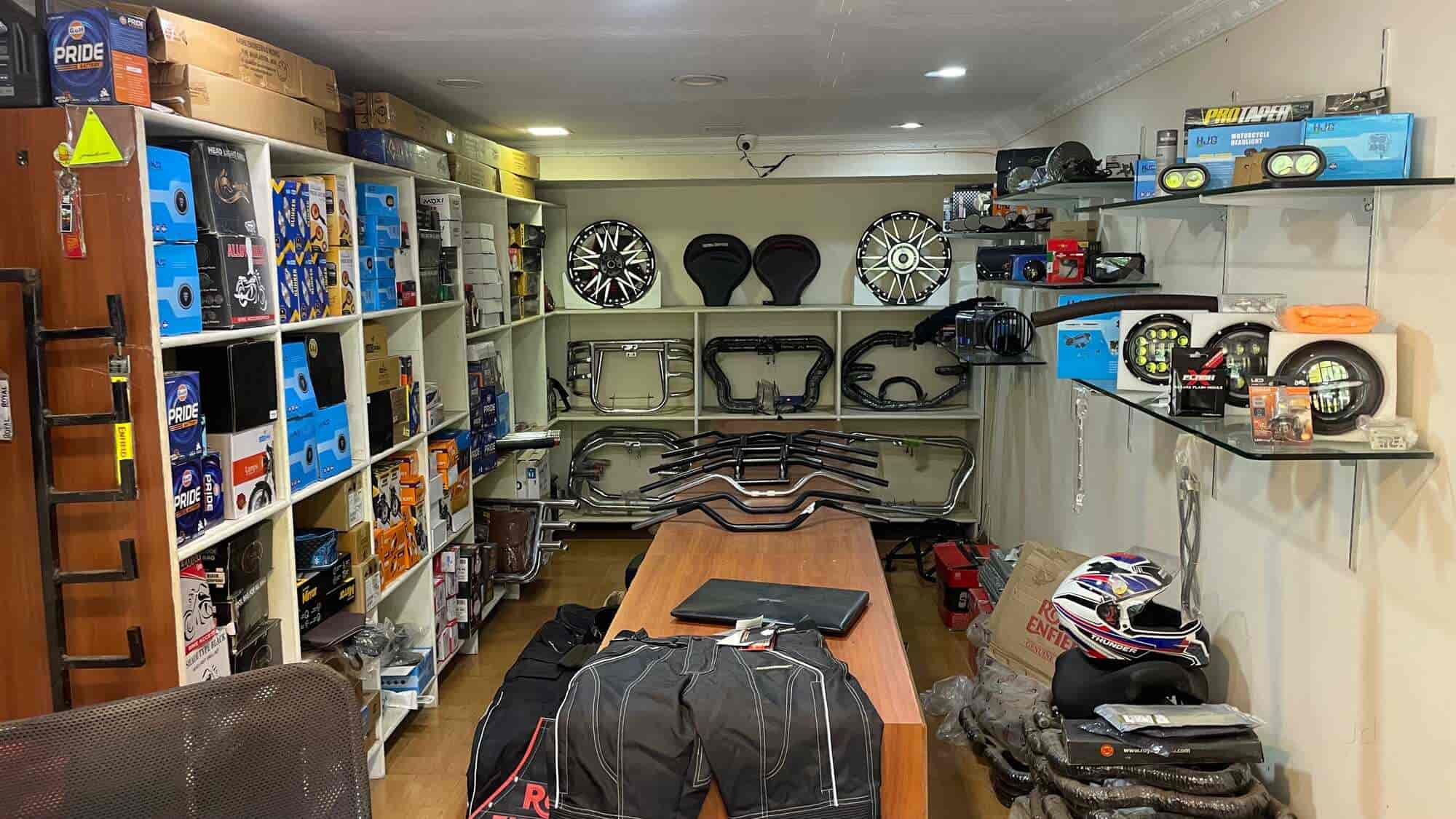Your Go-To Motorbike Shop for High Quality Parts and Accessories
A Comprehensive Appearance at Motorbike Parts: What Every Rider Should Know
A comprehensive understanding of motorbike components is not merely valuable but vital for any type of biker aiming to make the most of efficiency and security. Each component, from the engine's complex workings to the integrity of brake systems, plays a critical function in the overall experience and capability of the bike.
Understanding the Engine
The engine, usually related to as the heart of a motorcycle, is an intricate assembly of parts that operate in consistency to transform fuel right into motion. At its core, the engine's primary function includes the combustion process, where air and fuel mix and spark within the cyndrical tubes, resulting in controlled surges that drive the pistons. These pistons go up and down, transforming chemical power into mechanical power, which ultimately turns the crankshaft, eventually powering the bike.

Comprehending the details of a bike engine is vital for riders and fanatics alike. It not just provides insight right into just how bikes achieve their excellent power and speed yet likewise aids in reliable maintenance and troubleshooting, ensuring long life and dependability when driving.
Suspension Systems
While the engine powers the bike, the shock absorber plays a vital role in ensuring a smooth and controlled ride. The suspension system is liable for taking in shocks from the roadway surface area, preserving tire contact, and providing stability throughout cornering and stopping. It comprises two major components: the front forks and the back shock absorbers.
Front forks are usually telescopic, moistening and consisting of a spring device. The springtime prolongs and presses to take in bumps, while the wetting system regulates the activity to protect against extreme jumping. This combination makes certain the front wheel remains touching the roadway, providing remarkable handling and convenience.
The rear suspension, normally a monoshock or twin-shock setup, works in a similar way to the front suspension but is tailored to sustain the bike's weight and motorcyclist - motocross parts nz. It manages rear wheel activity, contributing to the bike's overall balance and responsiveness
Shock absorber can be flexible, allowing bikers to make improvements preload, compression, and rebound settings according to individual choices and riding conditions. This adjustability enhances performance by enhancing the motorbike's interaction with diverse terrains. In recap, an efficient shock absorber is important for motorcyclist convenience, safety, and the motorcycle's managing expertise.
Brake Components
Quiting power is a basic aspect of motorbike safety and security, and it depends upon the efficiency of the brake components. The key aspects of a bike's stopping system consist of the brake pads, calipers, blades, and master cyndrical tube. motocross gear. Each of these elements plays a critical function in ensuring efficient braking efficiency
Brake pads are necessary as they develop the essential friction against the rotors to reduce or stop the motorcycle. Built from products such as sintered metal or organic composites, the option of brake pad material substantially influences efficiency and durability. Calipers, housing the brake pads, use pressure to the pads when the brake bar is involved, helping with contact with the blades.
The blades, typically made from stainless-steel or actors iron, are mounted to the wheels and act as the surface area versus which the brake pads press. Their style, including size and density, impacts warmth dissipation and stopping power. The master cyndrical tube, connected to the brake bar, generates hydraulic pressure sent through brake lines to the calipers, making sure regular braking force.
Regular upkeep and evaluation of these parts are essential for ideal efficiency, preventing wear and making sure motorcyclist safety read review when driving.
Tire Fundamentals
Beyond preserving robust stopping systems, making sure optimum tire efficiency is just as substantial for bike safety and security and performance. Tires are the sole get in touch with point in between the bike and the roadway, making their problem crucial in taking care of, stability, and general trip high quality. Choosing the proper tire type is vital, as it straight influences grip and efficiency. Options range from exploring to sport tires, each developed to suit specific riding conditions and designs.

Furthermore, consider the tire's age. Rubber substances break down gradually, even if step shows up appropriate. Examine the sidewall for the DOT (Department of Transport) code to ascertain the tire's age. Generally, substitute is suggested every five years, no matter wear. Spending focus in these tire basics not only enhances efficiency yet additionally considerably improves riding safety.
Electrical Systems
In the realm of motorcycle maintenance, the electrical system plays an important role in guaranteeing trusted performance and cyclist security. This complex network includes crucial elements such as the battery, alternator, starter motor, and circuitry harness. Each element is important for the smooth operation of the motorcycle, from ignition to lighting and communication with various sensing units.
The battery works as the heart of the electrical system, supplying the needed power to start the engine and operate accessories. Routinely checking the battery's voltage and terminals for corrosion is vital to stop unexpected failings. The generator, on the other hand, charges the battery while the engine is running, photochromic motorcycle goggles ensuring a continual power supply.
To maintain it, bikers ought to pay attention to any uncommon noises or problems throughout startup. Making certain that the cords are complimentary and intact from damages is vital for stopping brief circuits and ensuring functionality.
Conclusion

Quiting power is a fundamental facet of bike safety and security, and it pivots on the performance of the brake components. The main components of a motorcycle's braking system consist of the brake pads, calipers, blades, and master cyndrical tube.Brake pads are vital as they produce the essential friction versus the blades to reduce down or quit the motorbike.Beyond preserving durable braking systems, making certain ideal tire efficiency is similarly substantial for motorbike safety and effectiveness.In the realm of motorbike maintenance, the electrical system plays a critical function in guaranteeing reputable performance and cyclist safety.